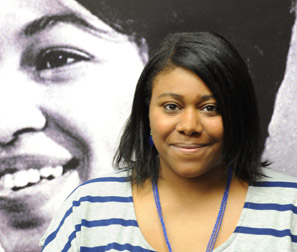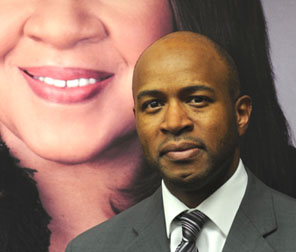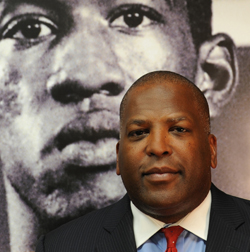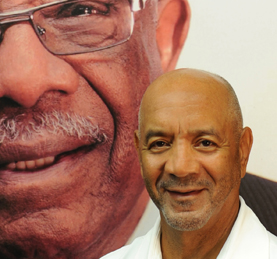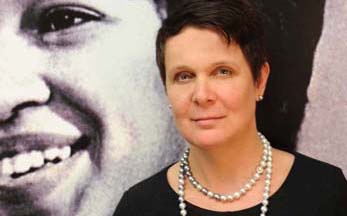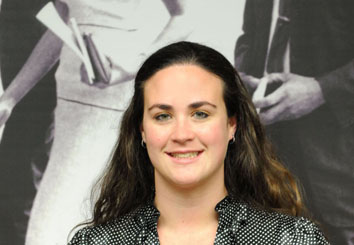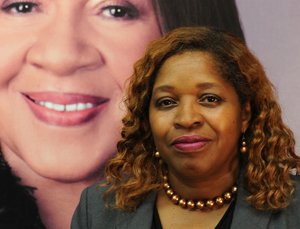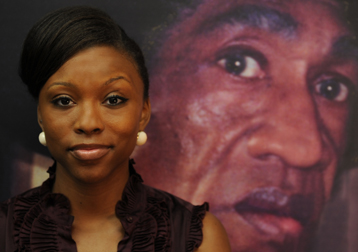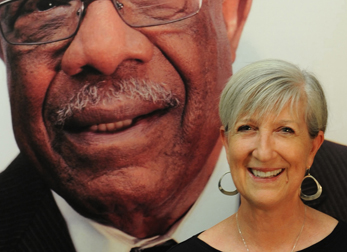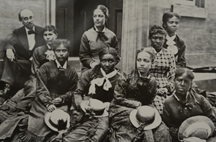

1963-2013: Desegregation—Integration Reflections |
||||||||||||||||
|
||||||||||||||||
“Integration is still a work in progress. As much as we mark the milestones of desegregation fifty years ago, I believe the University is compelled to be forever vigilant to make certain that we are as diverse and as inclusive of an institution as we can be. We should always recognize that all of our experiences are enhanced by engaging diverse backgrounds and ideas. We see transformations in our student body over time, and yet we must acknowledge that our flagship campus needs to be much more representative of the state. We clearly have made progress in terms of opening the doors of the university, but there is still valuable work for us to do—to further diversity among our undergraduates, graduate students, faculty, and administration.” Bobby Donaldson
|
||||||||||||||||
“W. E. B. Du Bois spoke of the problem of the 20th century being the problem of the color line. He could not have been more insightful. The desegregation and eventual integration of the University of South Carolina has been an arduous and vibrant process and, as I look back on these 50 years and the past 140 years, I am very mindful of the fact that, while there’s work left to be done, we have come a very long way. We are coming to a point where we not only tolerate but truly appreciate diversity and understand the value of our differences. This is a great journey.” |
||||||||||||||||
“True integration is more than tolerance; it is acceptance. I could not imagine belonging to a school that allows and continues to promote the hatred and ignorance, which are essentially at the root of racism. The University of South Carolina has strived to be completely integrated, as seen within our sororities and fraternities, clubs, organizations, sports teams, and dorms, as well as the vast number of international students that come to this country with the sole purpose of attending our great institution. You can walk into any classroom on any given day and see that the student body is comprised of students of all races.” Jessica Seeger |
||||||||||||||||
“Desegregation is about process—legal process— and getting the numbers right: making certain that there are efforts to achieve targets and that institutions are complying with court orders. Integration, however, is really about relationships and goes beyond process to the point where institutions have brought about enough change so that diversity is natural and sustains itself based upon the normal course of activities. When I attended USC, it was very much in the desegregation process; very little integration had occurred. Yet, at a recent forum for past USC student body presidents, I noticed that several presidents were black and several were female. This diversity was occurring through the normal course of events. And one thing was clear: those presidents who were representing the past 7-10 years were very comfortable with one another. They knew one another and had worked together outside student governance. USC seems to be much more natural than it once was as it strives to become a more fully integrated institution.” Harry L. Walker |
||||||||||||||||
|
||||||||||||||||
|
||||||||||||||||
“As a native of Brazil I see integration at USC on a spectrum. We have made strides in the right direction but have more work to do. The concept of race is different depending upon one’s culture; in Brazil, the focus is on the tone of your skin and your social class. Having learned more about the struggles and history of desegregation in South Carolina, I now see the distinction between the words ‘integration’ and ‘desegregation.’ Issues of race are polarizing and complex and certainly generate discussions about where we are as a country, a community, a university, and where we need to go.” Gabriela Martinez Gillespie
|
||||||||||||||||
“On paper and in terms of rhetoric, USC advocates integration and diversity. For example, the stance on civility is widely espoused; the university convened a Diversity Task Force in 2010 which resulted in a list of recommendations; the Carolinian Creed is beautifully stated, etc. Yet, I do not believe that USC represents the equity, equality, and hope envisioned in 1963. There is a contradiction between the promise of integration and current practices, policies, and structures. Strategic plans and such are important, but become rhetorical if they do not result in systematic, comprehensive, and sustainable structural changes. Virtually all senior administrators (central administration, deans, chairs, directors) are white males. While progress has been made, we have the illusion and slogan of integration on paper, but not in symbolic and substantive ways.” Gloria Boutte-Johnson |
||||||||||||||||
“Integration is somewhat prevalent on the campus of the University of South Carolina. There are various multicultural organizations promoting ‘togetherness’ and the resonating theme that ‘we are one.’ Every now and then you will see students of different races walking together, having lunch, studying in the library, and things of that sort. But are all of these instances truly what the definition of integration entails? In order to eliminate the shell version of integration, USC has to involve all cultures and attempt to make all people feel that they are a part of a true community.” Ashley Allen |
||||||||||||||||
“While obvious strides have been made in terms of legal integration, whiteness continues to dominate not only at USC but at flagship universities across the country. So I see integration at USC today as necessitating deeper discussions about issues of equity that, when unexamined, keep us from true integration. I see potential for us to lead national conversations informed by creating safe yet ardent spaces for difficult talk, spaces where we listen harder to students and faculty of color and collaborate in the examination of curricula, canons, classrooms, and the practices that guide our university lives. USC is rich in intellect, experience, heart, and conviction—ingredients that poise us to redefine integration as we contribute to building a more equitable society.” Susi Long |
||||||||||||||||
|
||||||||||||||||
![]()

to next exhibit

an institutional member of the International Coalition of Sites of Conscience
Museumofed@gmail.com

